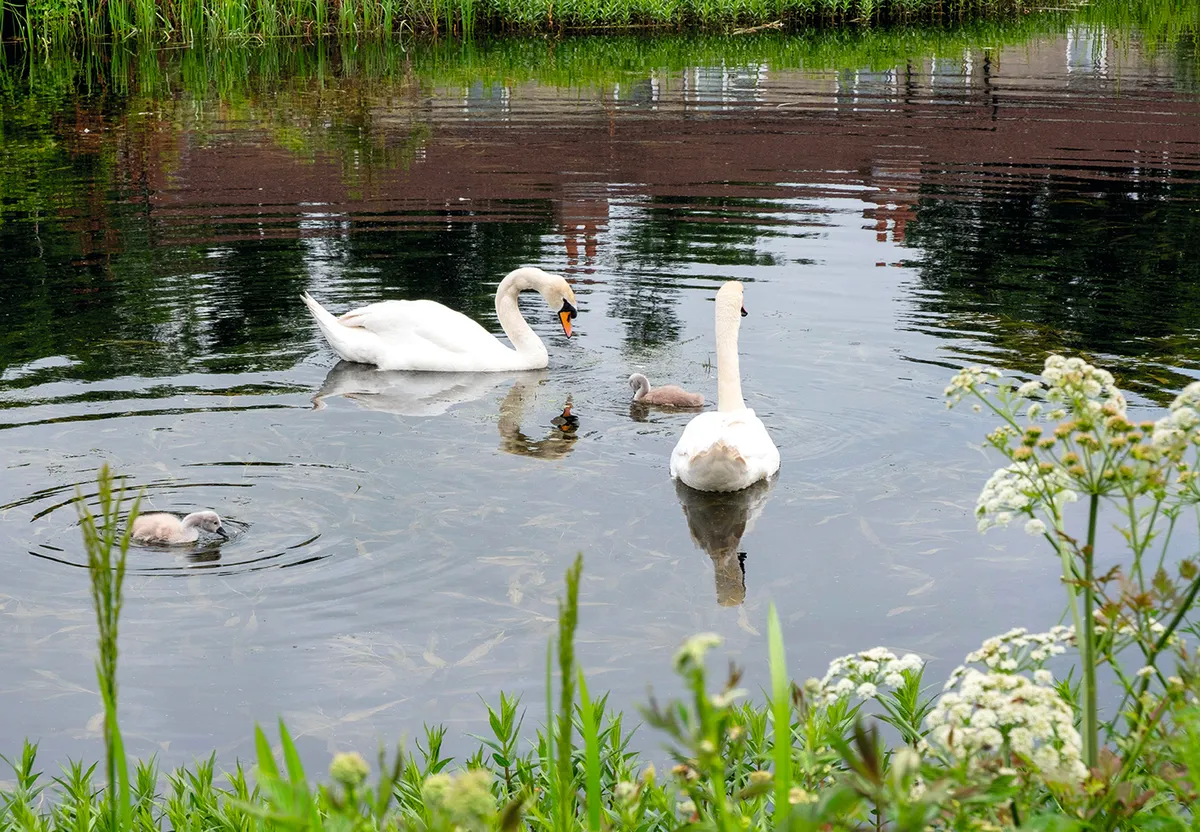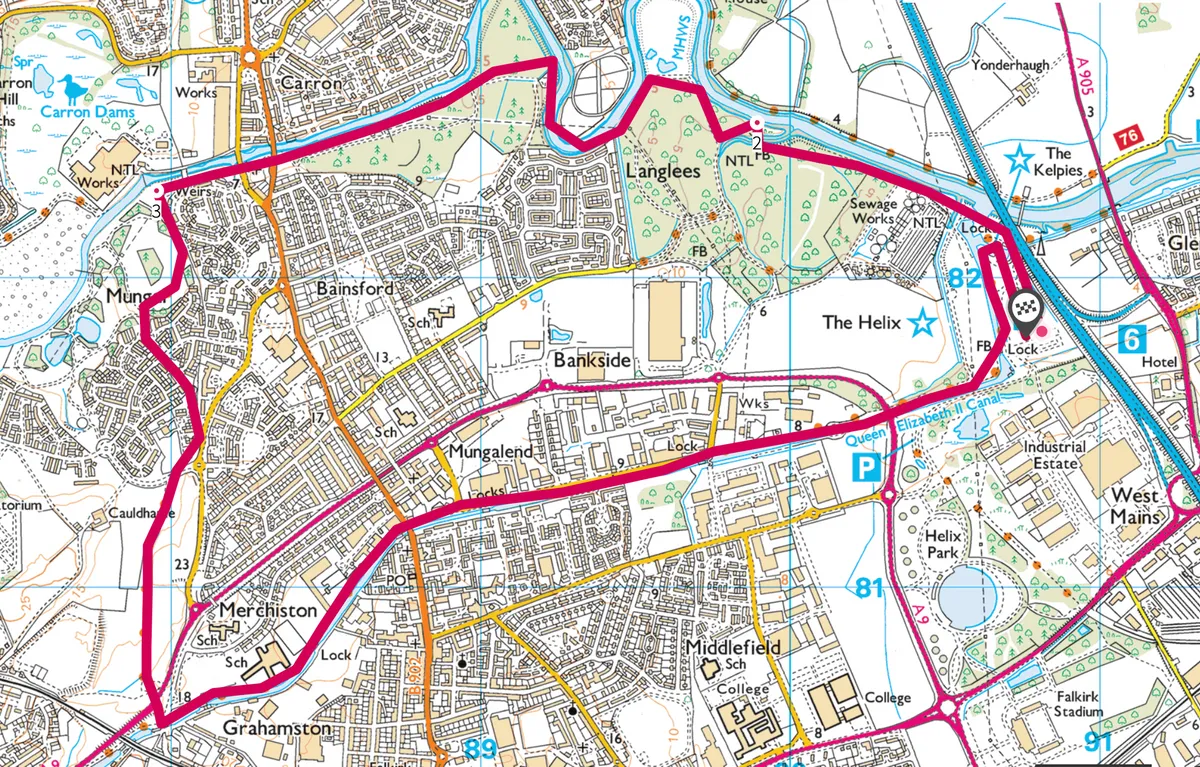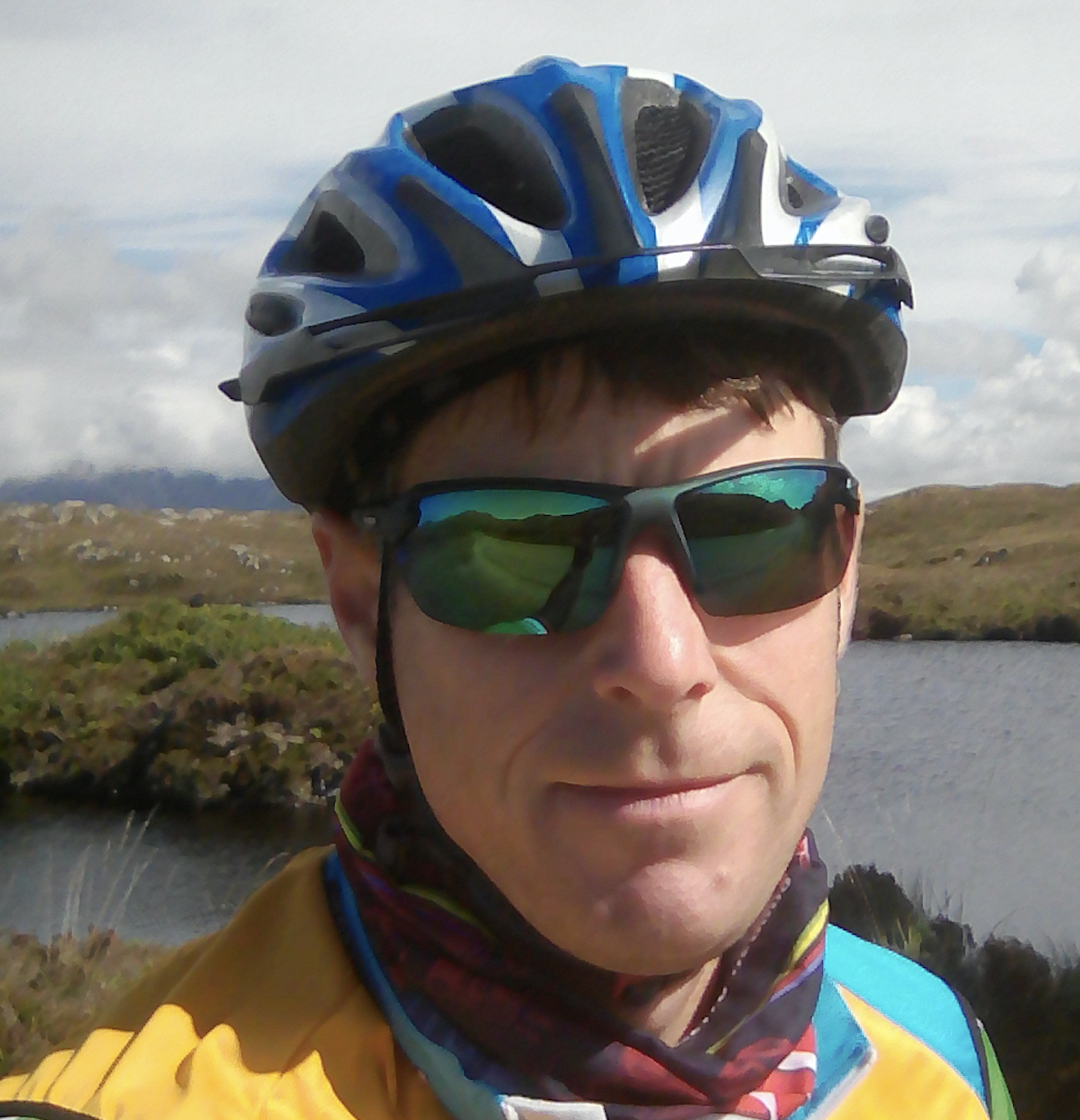This central Scotland route begins beside the striking Kelpies, two massive steel horse-heads created by Glaswegian artist Andy Scott. You can’t miss them. Each kelpie, a mythological horse, stands 30 metres tall and weighs more than 300 tonnes.
The sculptor, whose father came from Falkirk, created The Kelpies to pay homage to the draught horse, which traditionally pulled the wagons, ploughs, barges and coalships that shaped this former industrial area. The result, clad in stainless steel skin-plates, is inspiring, particularly up close. And you can walk inside them, too, when tours run (thehelix.co.uk).

What are The Kelpies?
The Kelpies are part of The Helix ecopark, and stand next to an adventure playground and a trail network that’s ideal for family cycling. Paved cyclepaths offer easy riding on this flat circuit from The Kelpies visitor centre and café. These lead through Abbotshaugh Community Woodland, a young, native mixed woodland that is idyllic on a sunny spring day. The way follows the River Carron and the Forth and Clyde Canal, which spills into the river at The Kelpies close to the Firth of Forth.
This whole area was central to the Industrial Revolution in Scotland when the abundant coal – which powered the smelters – and iron ore from nearby Bo’ness, were used to produce the ‘carronade’ – a short-range smoothbore cannon developed for the Royal Navy in the 1770s – among other innovations.
The heavy industry has now completely disappeared – now you cycle by remnant hedgerows, grassland and saltmarsh. Other sculptures are also passed in the woodland, home to roe deer, foxes, buzzards and kestrels. Fruit trees, such as apples, cherry and hazelnut, add splashes of colour with their dancing catkins and brilliant white blossoms.
The Kelpies bike ride
5.8 miles/9.4km | 1–2 hours | easy
1. Heading off
From The Kelpies car park, pedal by the gargantuan steel horses to cross a lock bridge and follow a Helix North sign on to the cyclepath by the Carron.
2. Floral picnic
Soon the path bends next to a tributary to reach across tracks by a sundial; go right to return to the Carron. Stay on the main path, which runs parallel to the river through woods full of birdsong. There are plenty of flower-filled picnic spots to soak up the spring sunshine. Keep an eye on any youngsters in your group as there are a couple of unannounced small road crossings.

3. Spring cygnets
At a junction for Mungal Riverside Path, go left, then take the first right where a cyclepath for Falkirk runs across fields of buttercups. Further on, go left to leave Mungal and join a tarmac path on the right. Cross a main road to join the Forth and Clyde Canal towpath. Go left for an easy and peaceful return cycle, enjoying the sight of graceful swans with their fluffy cygnets in the water below.
The Kelpies map
The Kelpies cycling route and map

